The week at a glance
- Dalmatian Pelican in Cornwall
- Alpine Accentor in Lincolnshire
- Caspian Stonechat in Hampshire
- Pied-billed Grebe on Mull
- Eastern Bonelli's Warbler on Isle of Man
- Oriental Turtle Dove still in Kent
- Rose-breasted Grosbeak still on Shetland early on
A week of easterly winds, warm temperatures and largely blue skies (though somewhat greyer later on) produced the finest seven days of the year so far, with a potential first for Britain, several mega-rarities, good numbers of scarcities and a strong passage of classic May migrants that made for a truly captivating week.
The potential first is of course the Dalmatian Pelican that has been touring West Cornwall since at least Saturday. Close analysis of primary wear shows it to be a bird seen in Poland, Germany and France in recent weeks — and, being unringed and showing no signs of captive origin, this probably has as good a chance as any pelican of making it onto Category A of the British List, although the possibility of a free-flying escape is always difficult (perhaps impossible) to discount. The pelican was still present in the Land's End area in mid-afternoon on Tuesday after two days of bizarre behaviour that included landing in fields and on farm ponds.
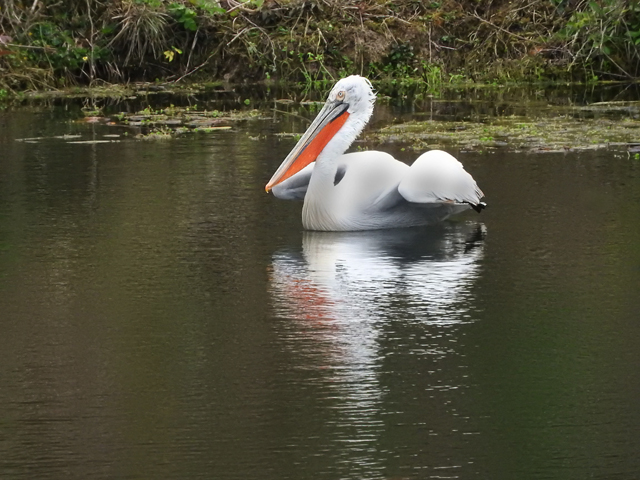
Dalmatian Pelican, Sennen, Cornwall (Photo: Mark Dowie)
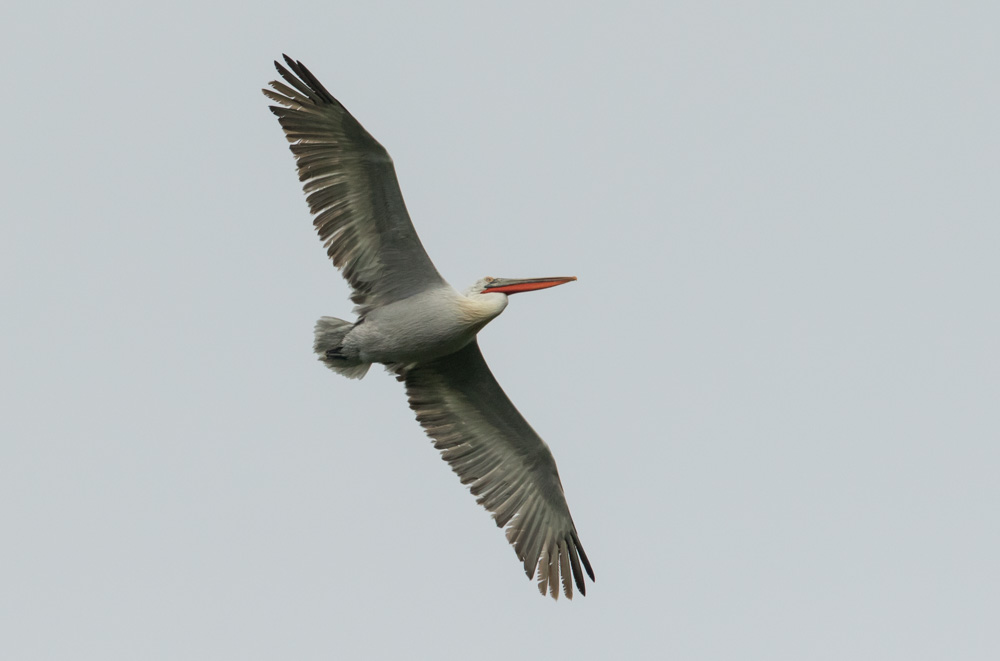
Dalmatian Pelican, Brew Pool, Cornwall (Photo: Ben Porter)
The spring's third Alpine Accentor was discovered scrubbing around at a feeding station at Gibraltar Point, Lincs, late on in the afternoon of 7th. It was present until dusk, but a clear night led to the almost inevitably disappointment as extensive searches drew a blank the following morning — the wait for a twitchable individual goes on. Consolation was provided by a singing male Western Bonelli's Warbler there on 7–8th. More on Gib's great weekend can be found here.
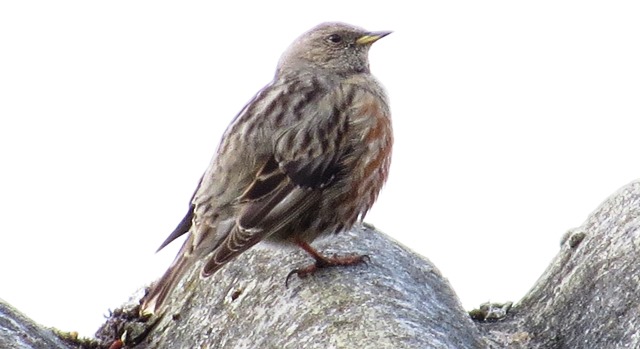
Alpine Accentor, Gibraltar Point NNR, Lincolnshire (Photo: Nige Lound)
Hampshire produced a stunning Caspian Stonechat on 10th. Expertly found and identified, the bird showed well at Titchfield Haven during the late afternoon and evening. Despite a long-stayer on Fair Isle and a twitchable autumn bird on Scilly in recent years, this bird is set to be very popular should it stick.
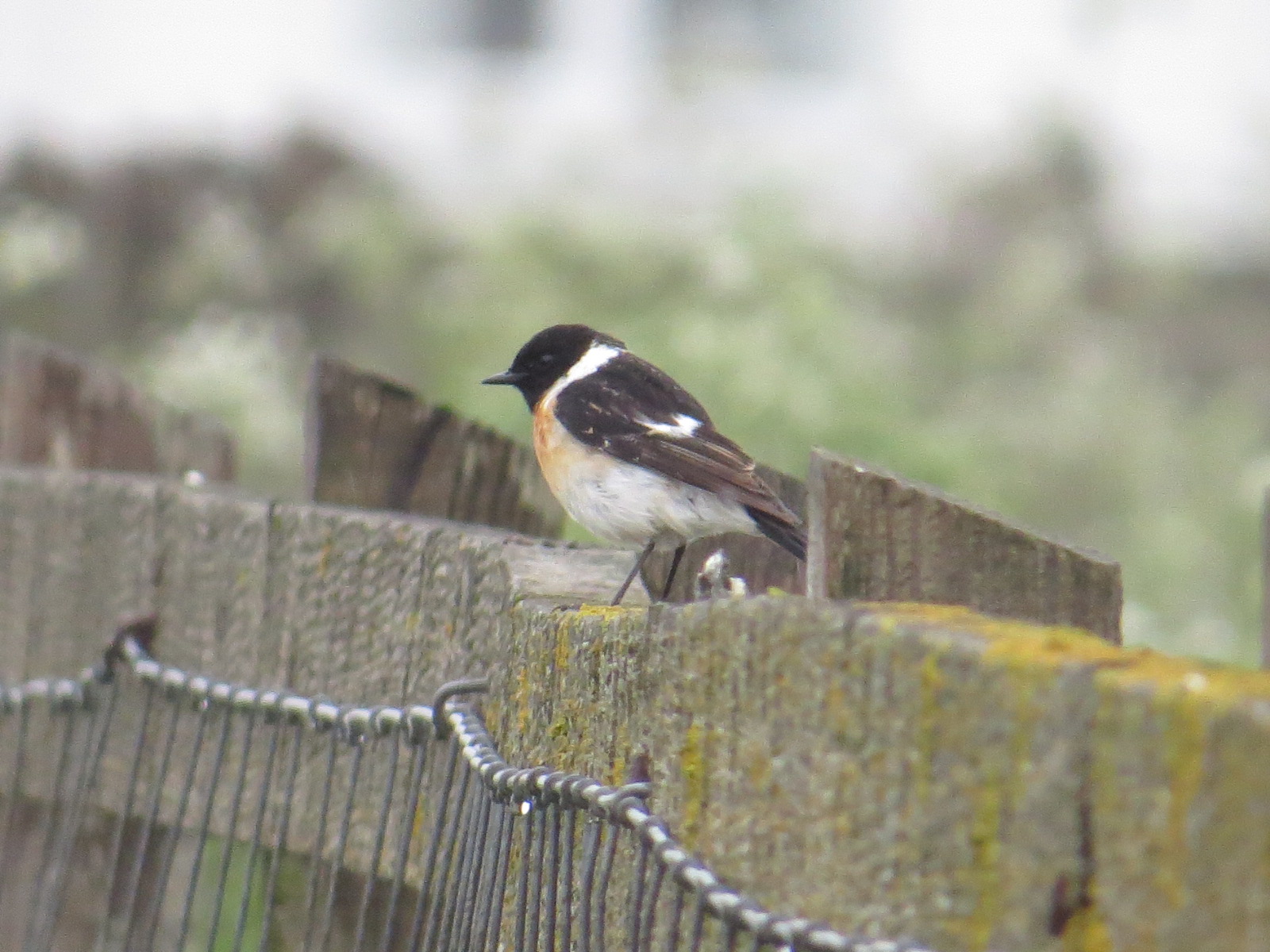
Caspian Stonechat, Titchfield Haven NNR, Hampshire (Photo: Amy Robjohhns)
An Eastern Bonelli's Warbler was trapped and ringed at the Calf of Man observatory on 6th but was not seen again after release. A Pied-billed Grebe was on Loch Feorlin, Argyll, on 7th for its second day and was a satisfying reward for the long walk required to reach the spot. A male Lesser Kestrel was reported briefly at Pegwell Bay, Kent, on 4th. Other highlights included the long-staying Oriental Turtle Dove still adhering to its early/late showing routine, the Rose-breasted Grosbeak still present on Burra, Shetland, to 4th and the Hudsonian Whimbrel again in Cornwall on 8th.

Oriental Turtle Dove, Otford, Kent (Photo: Mark Leitch)
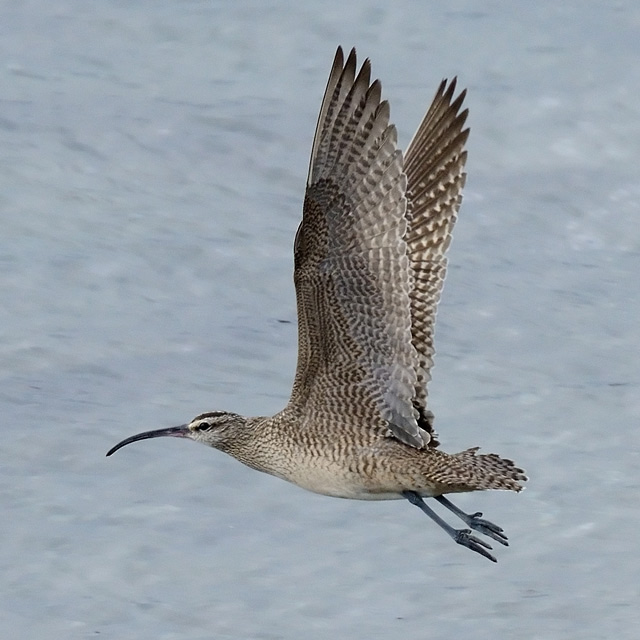
Hudsonian Whimbrel, Perranuthnoe, Cornwall (Photo: Ian Curran)
A Calandra Lark found on 10th was the icing on the cake for a fine week on Fair Isle that also saw no fewer than six subalpine warblers recorded: two Eastern (female on 8th; male on 10th) and four Western (male and three females). Other highlights included a peak day-count of four Bluethroats, a Red-rumped Swallow and typical May scarcities such as Wryneck, Grey-headed Wagtail and Red-backed Shrike.
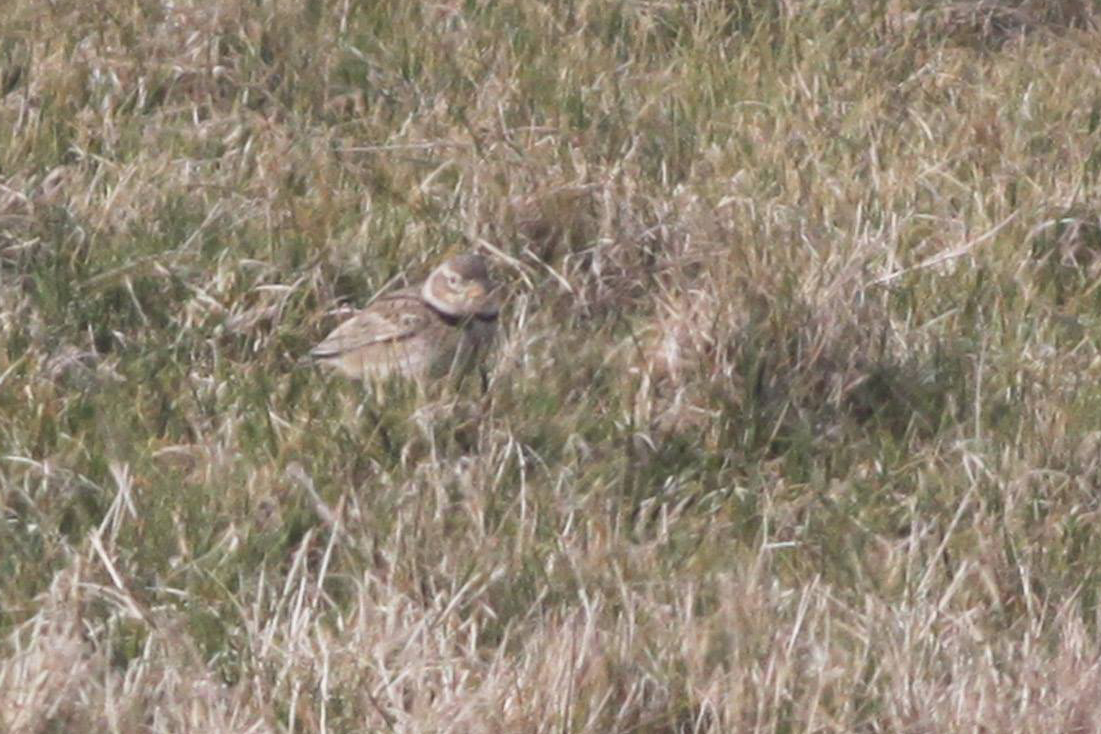
Calandra Lark, Fair Isle, Shetland (Photo: David Parnaby)

Eastern Subalpine Warbler, Fair Isle, Shetland (Photo: Lee Gregory)

Red-spotted Bluethroat, Fair Isle, Shetland (Photo: Lee Gregory)
Just the one White-billed Diver was recorded off Portsoy, Aberdeenshire, this week, with two noted on Shetland and an impressive three off Tory Island, Co Donegal, on 9th following one there the previous day. A new Green-winged Teal was on Lough Beg, Co L'derry, on 4th and one was again in North Yorkshire on 6th. The Ring-necked Duck was still on Islay, Argyll, on 10th, with another drake found on Skye, Highland, on 8th. Curiously the drake Ferruginous Duck was reported at Washington WWT, Durham, for the first time in almost two months on 9th. Drake King Eider continued in Highland and Aberdeenshire, while the Surf Scoter returned to Filey, N Yorks, after its recent vacation to Flamborough Head, and another was on Unst. A Black Brant was still at Spurn, E Yorks, early on.

King Eider, Ythan Estuary, Aberdeenshire (Photo: Baz Scampion)
A Night Heron was at Long Melford, Suffolk, on the morning of 4th but not again; another was on St Mary's, Scilly, on 6th. Jersey's first Squacco Heron was at St Ouen's Pond on 9th. At least seven Cattle Egrets were seen as far north as Norfolk, while the week's two Purple Herons were in Norfolk and Devon. Glossy Ibis were reported from 11 sites as far north as Angus, where two spent 8–9th at Montrose Basin. White Storks again included a bamboozling selection of records from Norfolk and north Suffolk, though birds on Alderney and in Durham, Somerset and Devon are perhaps more likely candidates for wild overshoots. The conditions also delivered a small passage of Eurasian Spoonbills through inland areas, including four in Northamptonshire on 7th and other records from Buckinghamshire, Bedfordshire and Cambridgeshire.
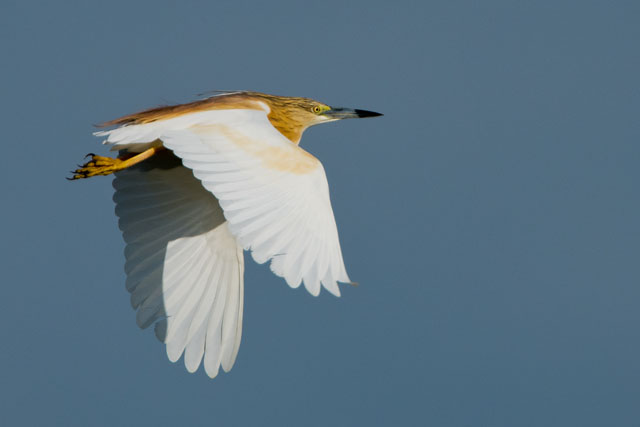
Squacco Heron, St. Ouen's Pond, Jersey (Photo: Romano da Costa)
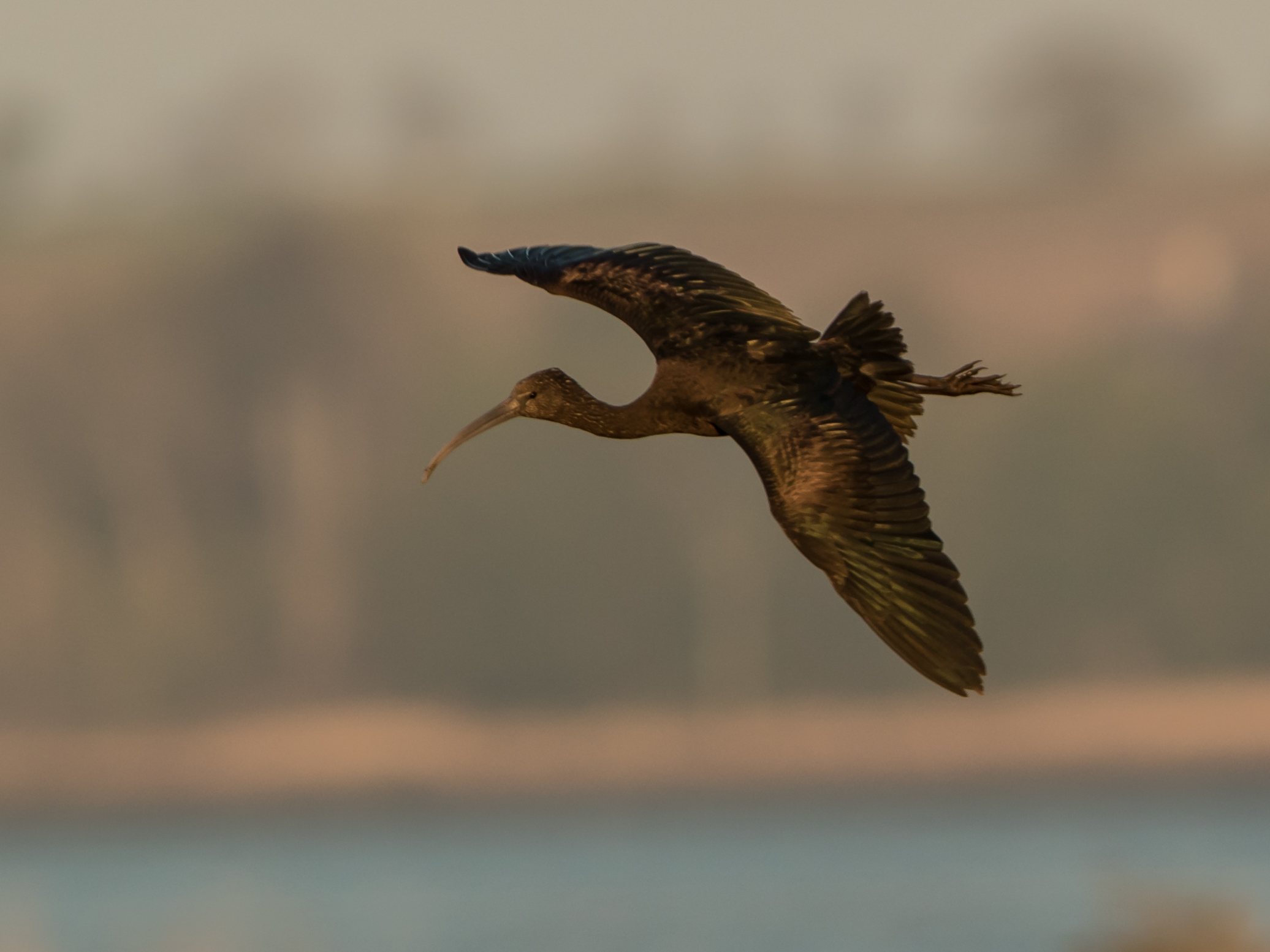
Glossy Ibis, Montrose Basin, Angus & Dundee (Photo: Neil Black)
Spoonbills, Northamptonshire (Video: Mike Alibone)
Black Kites were recorded at several sites in Kent throughout the week; further reports came from Lancashire and Cornwall on 8th, Co Kerry on 9th and two sites in Gwynedd on 10th. A first-summer Pallid Harrier flew through two sites in North Yorkshire on the morning of 6th, and another went through Brockholes Wetlands, Lancs, the following day. A male was reported at Kerry Airport on 9th.

Black Kite, Cliftonville, Kent (Photo: Barry Matlock)

Pallid Harrier, Wykeham Lakes (Permit Only), North Yorkshire (Photo: Terry Hobson)
The Snowy Owl continued on Scilly all week, favouring Bryher.

Snowy Owl, Tresco, Isles of Scilly (Photo: Barbara Crowther)
A female Red-footed Falcon performed well at Morden Bog, Dorset, from 4–8th and was one of six recorded this week. Others were as follows: male at Hayle Estuary, Cornwall, on 4th; one at Bass Point, Cornwall, on 5th; male in East Norfolk on 6th; first-summer female at Thorne Moors, S Yorks, on 8–9th and female at Swillington Ings, W Yorks, on 9th.

Red-footed Falcon, Morden Bog NNR, Dorset (Photo: Peter Moore)

Red-footed Falcon, Morden Bog NNR, Dorset (Photo: Tim White)
Last week's Black-winged Stilt at Frampton Marsh, Lincs, continued there to 6th before relocating to Cley Marshes, Norfolk, on 7–8th. Two touched down at Island Barn Reservoir, Surrey, on 4th and another two were at Hengistbury Head, Dorset, on 6th; single birds were noted in Kent on 6th and Dorset on 7th and 10th. Records of Kentish Plover came from the Christchurch Harbour area on 6th and 8th, while the male surprisingly reappeared at Audenshaw Reservoirs, Gtr Man, for the day on 6th. A female was on Guernsey on 6–7th.
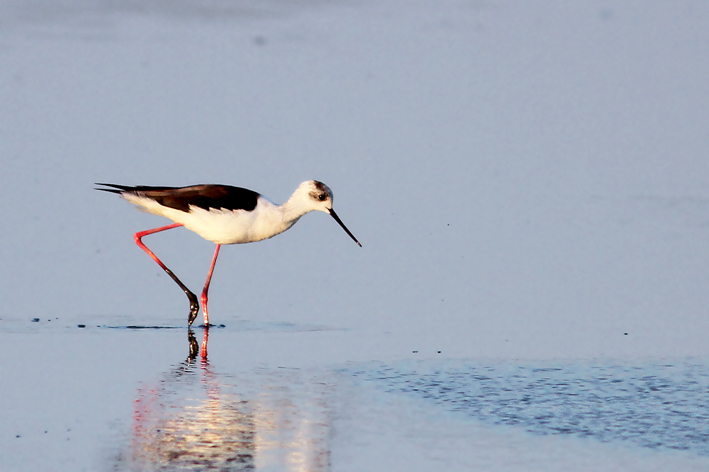
Black-winged Stilt, Cley Marshes NWT, Norfolk (Photo: Penny Clarke)

Kentish Plover, Grande Havre Bay, Guernsey (Photo: Mark Lawlor)
A Broad-billed Sandpiper briefly visited Marshside, Lancs, on 8th and the first Terek Sandpiper of 2016 was at Ynys-Hir, Ceredigion, for a matter of minutes on 9th. A Spotted Sandpiper was on Guernsey on 4th. No fewer than three Lesser Yellowlegs included the bird still on Islay and new individuals in Co Wexford on 5–6th and Aberdeenshire on 7–8th. The year's first Collared Pratincole flew over Rainham Marshes, London, late on 10th. A White-rumped Sandpiper briefly visited Swalecliffe, Kent, on 7th and a Baird's Sandpiper was reported at Stocks Reservoir, Lancs, on 9th.

Lesser Yellowlegs, Ythan Estuary, Aberdeenshire (Photo: Barry Farquharson)
Migrant Dotterel were noted at 13 sites, many of them traditional locations. It seems that the Choseley area of Norfolk is the contemporary hotspot for this species, with the count of 26 on 9th by far the highest total recorded nationwide. In comparison, sites such as Ingleborough in North Yorkshire, Pendle Hill in Lancashire, and Carnethy Hill in Lothian produced seven, four and three respectively.
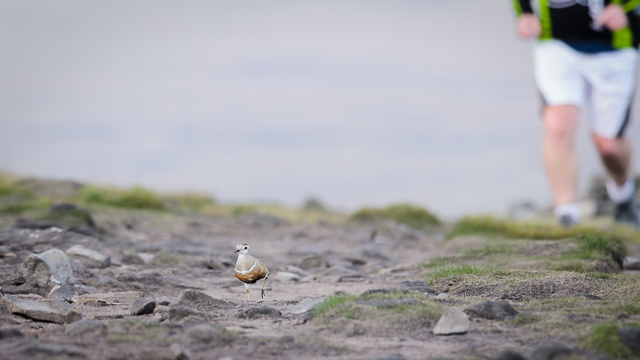
Dotterel, Pendle Hill, Lancashire (Photo: David Clegg)
It was a great week for wader passage in general, with Temminck's Stints reported from 18 sites including a peak of five at Hickling Broad, Norfolk, on 6th. The Midlands were awash with colour as breeding-plumaged Grey Plovers, Sanderlings, Turnstones all appeared in good numbers alongside smaller totals of brick-red Curlew Sandpipers and intricately marked Little Stints.
Black Terns also enjoyed a fantastic week as the near-continuous easterly airflow ensured that the passage of northbound migrants remained steady, rather than just the brief one- or two-day pulse that it so often is. We reported the species from an amazing 167 sites over the seven days, many sites registering counts well in to double figures — it's difficult to think of a better time to see the species on your local waterbody in recent springs. Among them came the first White-winged Black Terns of the year: two at Hurworth Burn Reservoir, Durham, on 8th and two lingering at Draycote Water, Warks, from 9th. Two Whiskered Terns at Long Eaton Pits, Derbyshire, on 6th moved to Attenborough, Notts, later that day before relocating to Sandbach Flashes, Cheshire, on 7th. Two flew through Keyhaven Marshes, Hants, on 7th and two were at Saltholme, Cleveland, on 8th, where they lingered until the week's end. Further records of single birds came from Ham Wall, Somerset, on 5th and Oldbury Power Station, Glos, on 10th. Also associated with these were smaller numbers of Arctic, Sandwich and Little Terns passing through.

White-winged Black Tern, Draycote Water, Warwickshire (Photo: Alex Barclay)
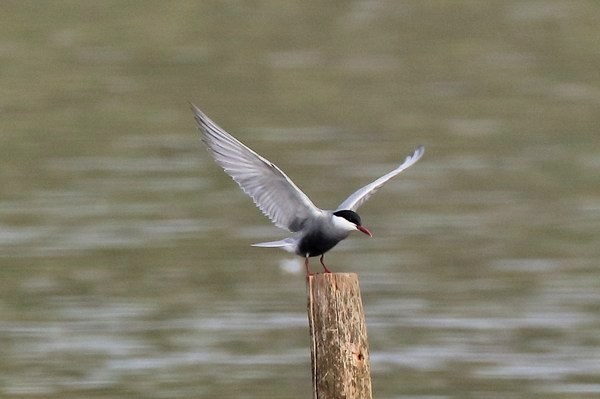
Whiskered Tern, Sandbach Flashes, Cheshire (Photo: Dave Kelsall)
The south-easterly winds brought decent Pomarine Skua passage to the South Coast, with a distinct peak noted on Friday, when counts of 121 at Dungeness, Kent, and 76 at Splash Point, E Sussex, were logged. The prevailing conditions were far from suitable for passage to commence spectacularly in the Outer Hebrides, but tallies of five and six Long-tailed Skuas past Aird an Runair, North Uist, on 4th and 5th respectively are a hint at better things to come.
Alpine Swifts were reported from Kingsdown, Kent, on 4th and Pope's Hill, Glos, on 8th but neither lingered. A baker's dozen of Hoopoes were spread widely, though none were twitchable this week. Several Wrynecks were noted, primarily in eastern areas, with a bird at Frampton Marsh, Lincs, performing well on 9–10th. European Bee-eaters were noted in five counties and included two together at Portland, Dorset, on 10th.
A total of 10 Woodchat Shrikes typically exhibited a south-westerly bias to their occurrence. One of three in Cornwall, a confiding male, delighted pelican twitchers at Marazion in the days after it was found on 7th. Elsewhere two were on Scilly and singles reached Co Waterford, Pembrokeshire and Anglesey, the latter at Cemlyn Bay on 8th. The exception, and a very significant inland record, concerned a bird photographed at Shirland, Derbys, on 4th. Half-a-dozen Red-backed Shrikes were primarily east-coast records, though a male at Mizen Head, Co Cork, on 8th was a good spring record for western Ireland.
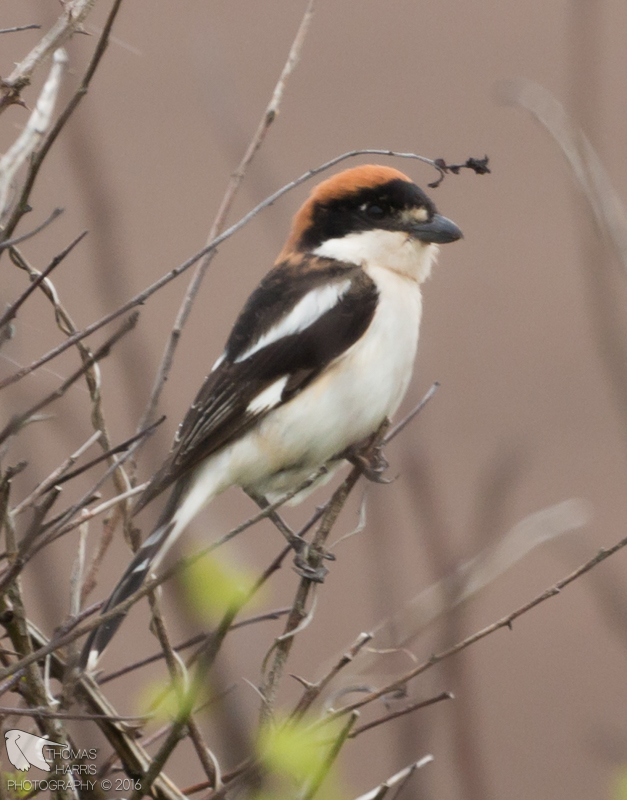
Woodchat Shrike, Brownstown Head, Waterford (Photo: Thomas Harris)

Woodchat Shrike, Marazion, Cornwall (Photo: John Rowe)
Red-rumped Swallows numbered eight including up to three on St Mary's, Scilly, during the week. Elsewhere birds were in Cornwall, Dorset, Kent (2) and on Fair Isle. Grey-headed Wagtail numbers hit double figures, while possible Black-headed Wagtails were recorded in Pembrokeshire and Clwyd on 8th, the latter at least demonstrating the raspy call associated with this form. A female Citrine Wagtail graced Saltholme, Cleveland on 10th and another was on the Isle of May, Fife, the same day. A Tawny Pipit was at Sumburgh, Shetland, on 8th, and a total of seven Short-toed Larks were noted across Britain and Ireland, with two new birds appearing on each of 7th, 8th and 9th.

Red-rumped Swallow, Fair Isle, Shetland (Photo: Lee Gregory)

Citrine Wagtail, Seaton Common, Cleveland (Photo: Daniel Branch)

Tawny Pipit, Sumburgh, Mainland, Shetland (Photo: Roger Riddington)
A singing Dusky Warbler isn't something that normally figures in the mind of an early-May rarity finder, so to clinch one at Hickling Broad, Norfolk, on 7th was a fine coup — it sang throughout the day but had moved on by 8th. The male Iberian Chiffchaff continued to sing on Tresco, Scilly, to 7th and another was reported at Bishopstone, E Sussex, on 5th. The Savi's Warbler was still singing at Minsmere, Suffolk, to 6th. A Melodious Warbler was a fantastic find at Kilnsea, E Yorks, on 10th and another performed well on St Mary's, Scilly, from 9th. Three singing Great Reed Warblers were unearthed: at Netherfield Lagoons, Notts, and Willington Gravel Pits, Derbys, both on 9th, and on St Mary's, Scilly, on 10th.

Melodious Warbler, St. Mary's, Isles of Scilly (Photo: Martin Goodey)
It was a great week for subalpine warblers. In addition to the amazing influx on Fair Isle, at least eight others were seen nationwide. A cracking male Eastern was on Bardsey Island, Gwynedd, on 9–10th and another was at Mossbank, Shetland, on 9th — interestingly, the latter site hosted a long-staying male Eastern in autumn 2015. A male, thought possibly to be Moltoni's, was seen briefly at Lizard, Cornwall, on 9th though not again; a female subalpine species was in the area the following day. Others were seen in Co Wexford, Scilly and on Alderney.
Two Thrush Nightingales popped up on 10th, both in classic locations: the Isle of May, Fife, and the Farne Islands, Northumberland. Both those locations also hosted Red-spotted Bluethroats, a species which appeared in double figures this week. Of these a male at Filey, N Yorks, on 8–9th was popular and several typically graced the Northern Isles. The first Red-breasted Flycatcher of the year was also on the Isle of May on 10th.

Red-spotted Bluethroat, Filey, North Yorkshire (Photo: Alex Meek)
European Serins were at 11 sites this week and included a lingering male at Land's End, Cornwall, from 9th that showed to those waiting for the pelican to appear. Other notable records included two at Frampton Marsh, Lincs, on 5th and one over Cross Ness, London, on 8th. A Common Rosefinch on Foula, Shetland, on 7th was followed by one at Calf of Man on 10th. The first British Ortolan of 2016 was at Crook Ness, N Yorks, on 10th.
Western Palearctic news
Israel enjoyed another mega-filled week, with the nation's fifth Crab Plover pitching down briefly at Eilat's North Beach on 7th. A young Bateleur was found among northbound Honey Buzzards in the Eilat Mountains on 8th (photo by Joachim Bertrands here), a day which also saw four Oriental Honey Buzzards logged. Elsewhere the Red-billed Teal was still near Idan.
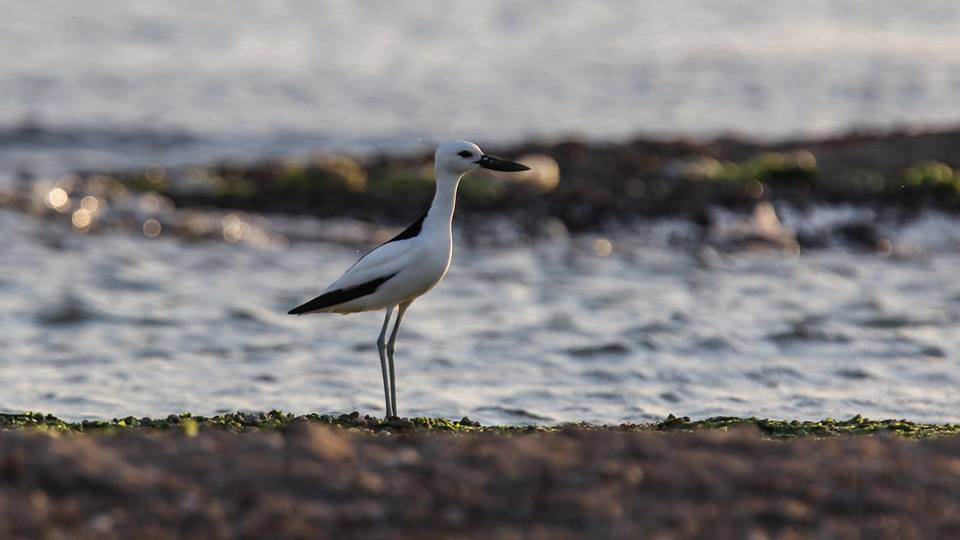
Crab Plover, Israel (Photo: Eric Didner)
A Pied Crow spent a couple of days on Egypt's Red Sea coast at Wadi Lahami from 5th; a probable male Red-headed Bunting at Marsa Alam will represent a national first if accepted. A Yellow Bittern was also recorded at Wadi Lahami this week.
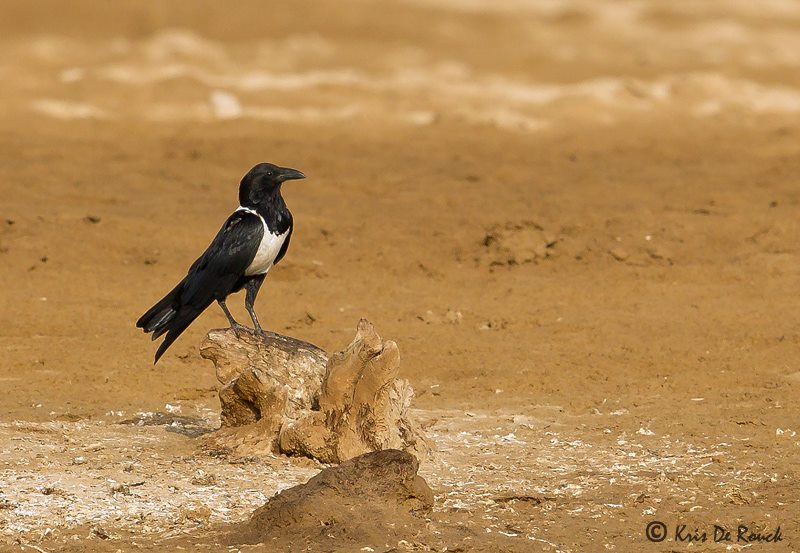
Pied Crow, Egypt (Photo: Kris De Rouck)
Belgium produced a smart female Pine Bunting near Rochefort on 8th. A Cretzschmar's Bunting on Sylt, Germany, from 9th is the first in the country since 1880; the Black-browed Albatross was seen again there on 5th and then back on Heligoland on 8th. A Great Bustard flying past Anholt wind farm, Denmark, on 8th is potentially the first national record for 37 years, while Alpine Accentors proved twitchable in both Denmark and the Netherlands; the latter country also claimed its third Lesser Kestrel when a male flew over Balloërveld, Drenthe, on 9th. Poland's first Black-winged Kite was at Rewa on 8th and two Cinereous Vultures in Baden-Württemberg, Germany, on 9th were satellite-tagged individuals from Spain.

Cretzschmar's Bunting, Germany (Photo: Felix Timmermann)
A quite sensational first for France came in the form of a male Tristram's Warbler photographed south of Montpellier on 7th but, unfortunately for local birders, it was a one-day wonder and was seen only by the finder. The Amur Falcon continued near Paphos, Cyprus, to at least 7th (photos here) and Spain's Mourning Dove was still on the Llobregat Delta on 8th.


